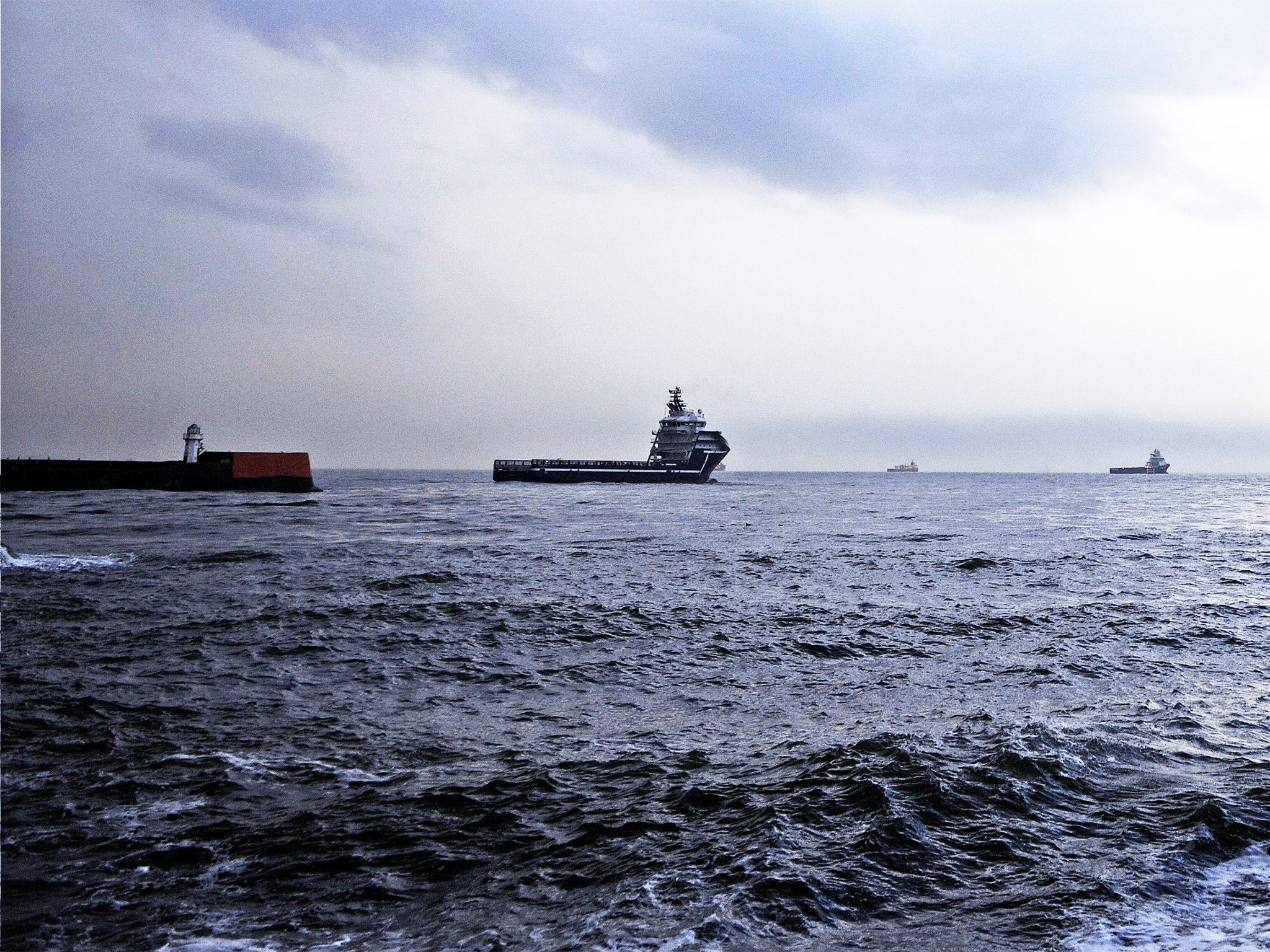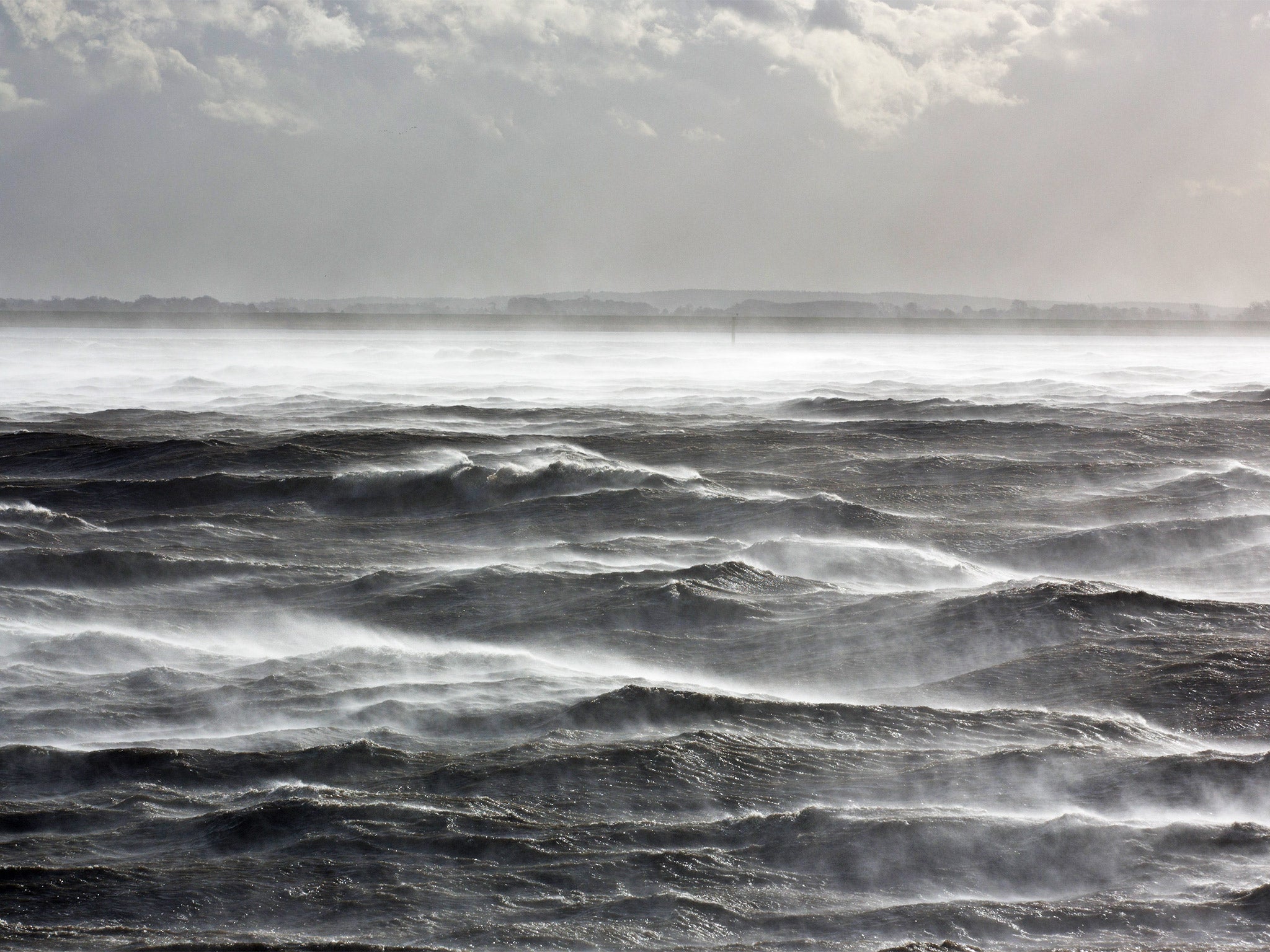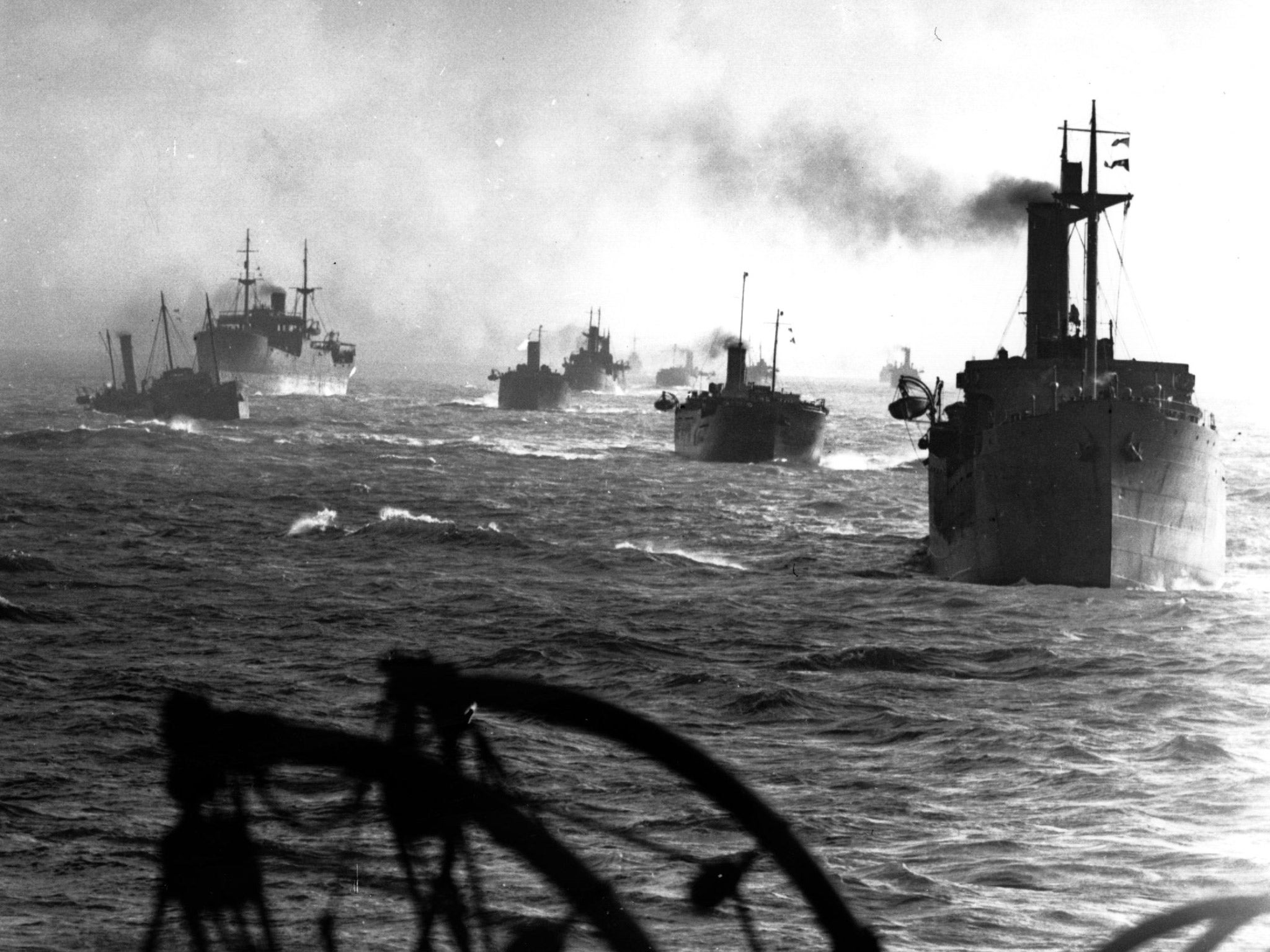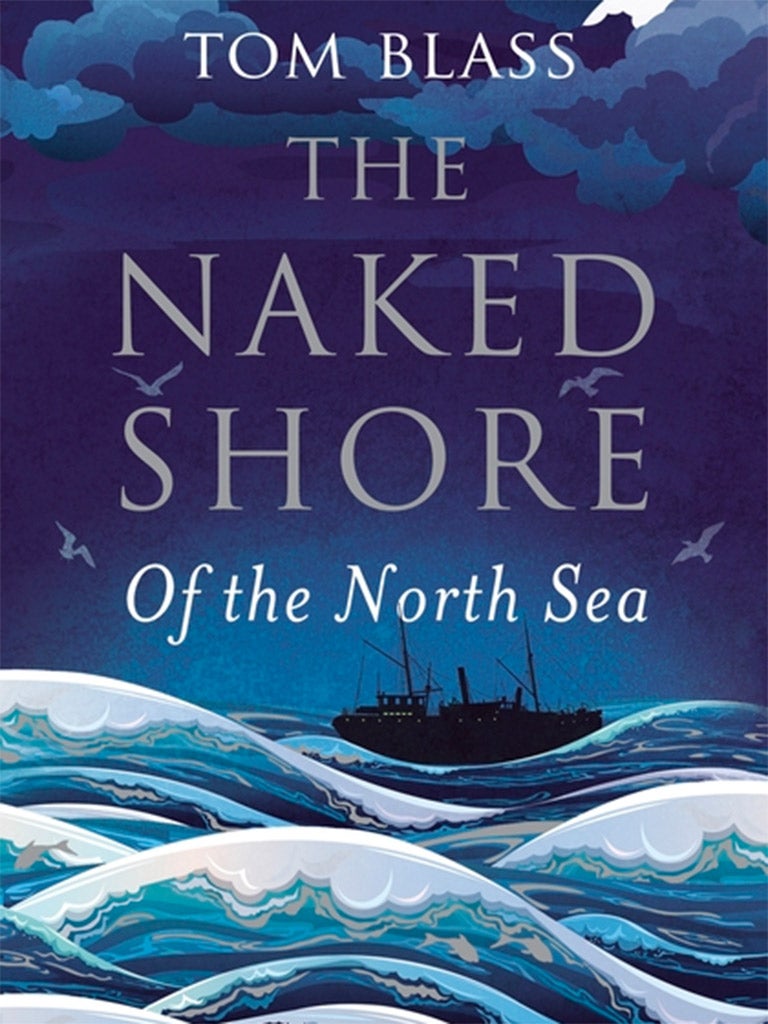How the North Sea has shaped our world
Saturnine and cruel, the formidable North Sea is often overlooked – even by those who live within a stone's throw of its steel-grey waters. But as a playground, theatre of war and cultural crossing-point, it has shaped the world in myriad ways, forging heroes and villains and sealing the fates of nations. Tom Blass boarded ship and travelled across it

On a late autumn afternoon in 2012, I boarded a freighter, the MV Longstone, at the Humber port of Killingholme – to experience crossing the sea that had been preoccupying me for so long.
At around midnight, the Longstone pulled away from the quayside and began its slow canter to Gothenburg – in the invisible wake of so many ships over the course of a millennium or two of history – availing me of the opportunity to reflect on the dramas played out on the North Sea and the role it had played in the story of Europe…
I was to sleep in a spare but large and comfortable cabin on the other side of the corridor to the (steaming, odorous) galley. Scattered in the mess were relics of those who had travelled before me – well-thumbed back copies of Truckstop News and other reading matter. Patrick, the first mate, apologised for the lack of travelling companions. At weekends, he said, the ship was full to the gunwales with Irish truckers taking sides of beef to Sweden. I assured him that my own company would suffice.
In the morning, from the bridge, I watched the freighter's great hull beating down on spry but pliant waves – and the horizon and the dipping gulls. Patrick told me that this would be a good crossing. He had spent most of the past year on the Falklands run, three weeks each way, arriving in Port Stanley feeling numb and listless.
This trip was like a bus journey, a mere four-day round-trip from the river mouth to Gothenburg, a thousand miles distant on the coast of the Skagerrak (it's pronounced "Skayraak", like the rasping of a crow).
In earlier centuries, the ships on this route, so much smaller and more fragile, made the same journey laden with bolts of wool and bundles of petticoats, returning with warm pelts from the deep North, ancient amber and timber. We were taking car parts and cat food to Sweden, and the boat would return with Volvos and Christmas trees.
In a day, we would come close to the necklace of the Frisian Islands – Sylt, Amrum, Terschelling, Schiermonnikoog – and head north towards Heligoland and the Halligen half-islands, on the way passing a forest of oil rigs, slick pools of what once were ancient trees, the flared gas like distant match flames.
Only a generation old, these are among the North Sea's newest accretions. But other features of the scar-impervious sea hold their course through all of its moods. Joseph Conrad had noted the North Sea's "grey-green smudginess" and its "angry grin", a gloomy sky above. The Phoenicians and Romans, he pondered, "had experienced days like this, so different in the wintry quality of the light from anything they had ever known in their native Mediterranean".
At noon, a call to the bridge scratched through an intercom from the galley. "Tell the passenger his lunch is ready," was the message from the cook, grey-skinned with a scalp as smooth as an eel's. At the galley door, he handed me a glistening hubcap of an omelette and urged me in the direction of the lonely mess room, where I ate a morsel, bolting it down with a nugget from the letters page of the Meat Trades Journal.
At sea, every vessel within eyeshot becomes worthy of remark, as one might discuss the features of passing strangers on a lonely country walk. First, a handful of trawlers, then an improbably top-heavy container ship, and next another roll-on, roll-off vessel or "ro-ro", a direct competitor of ours, heading back from Gothenburg. Our mate knew its mate, and he regaled me with an impenetrable tale of commercial rivalries, undercutting shipping companies and not-to-be-trusted employment agencies, lest I should be duped into thinking that the transport industry was as simple as transferring goods from place to place.
It was easy to be lulled into forgetting why I found myself aboard the Longstone, mesmerised by her slow roll, the passing of hours, the cups of tea. But the endless, churning mass of water was the very reason. I had set out to write a book about this sea and its world, too often snubbed by writers, derided for its moody lugubriousness, its inclination towards inclemency and damp, chilly sands. But both the sea and shores it beats upon possess their own allure.

True, the sea so deftly erases clues to its own history. Already, many of the coastal defences built during the last world war have crumbled into oblivion. Relics from previous centuries and millennia are more elusive still.
Early inhabitants of the North Sea basin, the Chauci and the Frisians, constructed terpen – earth mounds that rose above the floodplain upon which they built their homes, granaries, livestock stores and places for growing crops. Such structures yielded to the temper fits and ill-humoured sorties of the waves, which seldom left lasting damage. The move to build dykes – pushing back the chaos of the sea – coincided with the spread of Christianity. Surely, archaeologists have suggested, there is some parallel between the reclamation of the land and the saving of the pagan soul?
It took classical minds born of warmer waters to name the sea and its parts and preserve their observations for posterity. The tides were a perennial puzzle. In 325BC, a Greek, Pytheas of Marseille, described their rising and falling as "the lungs of the sea" when he encountered them off the coast of Holland.
Pliny the Elder, on being told of the twice-daily transformation of the mudflats of the Frisian Islands, was uncertain as to whether they should be regarded as belonging to land or sea, challenging the long-held axiom that the one is not the other. Pliny called the sea adjacent to Britain the Oceanus Britannicus, and that adjoining the German coast the Mare Germanicum.
Both were tricky places for the Romans. Partly on account of those treacherous tides, but also because they were not the masters of these waters. It was the Frisians and other tribes that possessed the upper hand, and the Pax Romana applied less readily out of reach of land. In AD69, Roman vessels fought a pitched naval battle with a cohort of mutinous Germans who had had the audacity to steal 24 of Caesar's finest galleys. A century on and the Picts were the most assiduous of the piratical tribes. Later, it was the Franks and the Saxons. The last straw was a maritime assault on Roman Britain and northern Gaul in AD367. Described as a barbarica conspiratio, this was a hellish combination of Picts, Scots, Saxons, Franks and even the Attacotti, an elusive tribe of native British barbarians, possibly cannibals.
Hundreds of years after the Romans had decamped came the Norsemen, sacking the monastery at Lindisfarne and sending history text books a-tremble for 1000 years. Perhaps because the tonsured, peaceable monks would ultimately write those text books, their former tormentors have been sidelined within the European narrative, dismissed as part of its misspent youth. Proper, respectable, history begins with the payment of taxes and tithes and the consolidation of the power of the Church – transforming the North Sea as a political space and pushing the Scandinavian kings and warlords to the fringes of a Europe whose centre of gravity now lay further to the south. Trade flourished as burgeoning cities inland demanded more in the way of goods from overseas.
Naval architecture responded in kind. In middle age, the once sharp-prowed longboat, so well suited to slipping (viciously, inquisitively, lustfully) in and out of estuaries, lost its sleekness. Its successor – the fat, capacious cog – was sluggish and portly in contrast with the svelte beauty it replaced, but suited the purposes of a general trading ship, with sufficient bulk to carry cargoes of grain, timber, wool and leather… Boat design reflected the topography of the coast, the needs of trade and the perils of the time, whether tides or pirates. And over time, taller, straighter dykes and sea walls and ever more efficient means of bleeding the land of the polluting sea sapped away the ambiguity of the shoreline. The very identity of the sea altered. Once a proving ground for warriors, it acquired a new role as a hinterland, serving the interests of elites whose greater concern was the possession of estates and castles than mastery of the waves.
Soon the sea would fall into the purview of scientists and navigators, their new mathematical arts enhancing and supplanting the ancient art of reckoning by observation of clouds, creatures, currents and celestial bodies.
No less illuminating than the stars above were the mud and shingle below. Many sailors forsook the astrolabe and compass, which were fiddly, expensive and prone to error, but no ship would leave port without a lead and line, a hollow lead bell filled with tallow at the end of a long rope. By lowering the bell to the bottom of the sea and retrieving it, a captain knew both the depth of the water beneath him and the constitution of the seabed. Given the ephemeral appearance of the surface, these gave a more reliable indication of location than any other available clues.

By the late 17th century, the navigator Captain John Hammond was able to give the "Directions To Be Observed Going and Coming From Norway" in around a dozen blunt but comprehensive sentences, half of one of which follows:
On ye North edge of Well Bank, if you have 28 fathoms of water, stony ground, without you be Easterly, the SW part ye same and 12 and 13 fathom, but on ye middle of this bank, 17 or 18 or more depth, sometimes fine sand and other times coarse and black specks, ye soundings on this Bank being Variable but Steering East you deepen your water and sometimes meet with coarse ground and 27 and 28 fathoms water and then less before you fall off your east side between the Well Bank and white water, where you'll find at 24 and 25 fathoms nothing on the lead…
If the bearings are approximate, the descriptions of the sea's bottom are almost tender in their precision. Of Swart Bank, he notes: "The middle… is like oatmeal." Other features are to be identified by their "fine, yellowish-coloured sand", "fine, light-coloured sand", "muddy foundings", "darkish rock" or "whitish sort of foundings mixed with yellow particles".
Intricate as this knowledge of seabed's anatomy may have been, it provided little defence against human dangers such as were presented by pirates and, in the 16th-century, Watergeuzen or "sea beggars". These Dutch, aristocratic adventurers were rallied by William of Orange to the cause of independence from the Habsburgs, and were rumoured to visit terrible things upon anyone they chanced upon possessing anything of value.
The collapse of the Habsburgs' power in the Netherlands opened the door to a Golden Age that placed Amsterdam at the heart of north European culture. Bankrolling the gilded glory was a silvery but modestly sized fish – and that the Dutch still possess a culinary affection for the herring (which the English can scarcely stomach) is an acknowledgement perhaps of everything the nation owes it.
The waves sparkled brighter still beneath the enlightened gaze of the 18th century, the sea acquiring a new, more abstract identity and a role as a source of pleasure and health – in essence, more than a mere resource, a conduit for trade or theatre of war, but as a thing in itself.
Around the same time, Europe was drawn to new markets and the promise of greater riches in the Indies, East and West, in North America and Sub-Saharan Africa. The North Sea remained at the hub, but of ever-spreading, concentric circles of wealth, power and possibility. Now the use of larger ships with deeper draughts relegated coastal towns with shallow harbours and channels to second-class trading posts or made them entirely redundant. Meanwhile, improved roads and canal networks spread like a mesh of capillaries throughout Europe, undermining the importance of the old sea routes.
Communities that had relied on cultural and economic ties with their equivalents across the North Sea or along the coast began to look inland for markets. Smaller settlements dependent on trade, or on artisanal fishing from open boats or nets worked from the shore, could no longer compete with the bigger fishing towns with their large trawler basins and deep-water docks equipped for transporting by the railways – which brought also a new breed of seasonal migrant, the tourists with their bathing machines, dance cards and donkey riding, the descendants of whom continue to return in droves each summer.
Shades of light and dark, war and peace have dappled the North Sea ever since, inspiring thriller-writers, painters, poets, architects and visionaries of other kinds. Even in the face of cheap flights to "sunny Spain" and Phuket, we continue to chance a North Sea holiday. Freighters ply many of the same routes as the fluyts and cogs of centuries past. Fish, despite the gloomy auguries of scientists and conservationists, still spawn and shoal and are caught and grace our tables.

True, the North Sea can be a lonely place. Just as the Mediterranean is garrulous, busy and bright even where its shores are empty, its North Sea counterparts tend towards the sombre, the still and the stern, even where trampled by happy summer crowds.
For all that, I reasoned in conceiving my book, it scarcely deserves our indifference. Other seas may be more photogenic, more televisual, their ports and harbours exotic and sensual, but was it fair to permit the North Sea to become unfamiliar through being overfamiliar? What did I know previously of the courtship rituals of the island of Föhr, the tragedies inflicted upon Heligoland, the mysterious language of Norn, the genius of the Ostend painters, the trials and tribulations of the German Warft [artificial mound] dwellers, who each year confront the power of the Sturmflut [storm surge], or the boozy pleasures waiting behind the portals of the Nordern Lights Pub?
Indeed, what had I experienced hitherto of the magic of a winter's evening in the marshes of the estuary of the Thames, from where I set out, by bus, boat, bicycle and train to explore the sea that lay beyond? And what epicurean delights would I have never known, had it not been for an omelette chewed to the beat of the pitch and yaw of a Swedish-bound freighter, as it skirted the Dogger Bank?
This is an edited extract from 'The Naked Shore: Of the North Sea' by Tom Blass (£20, Bloomsbury), out now
Join our commenting forum
Join thought-provoking conversations, follow other Independent readers and see their replies
Comments
Bookmark popover
Removed from bookmarks